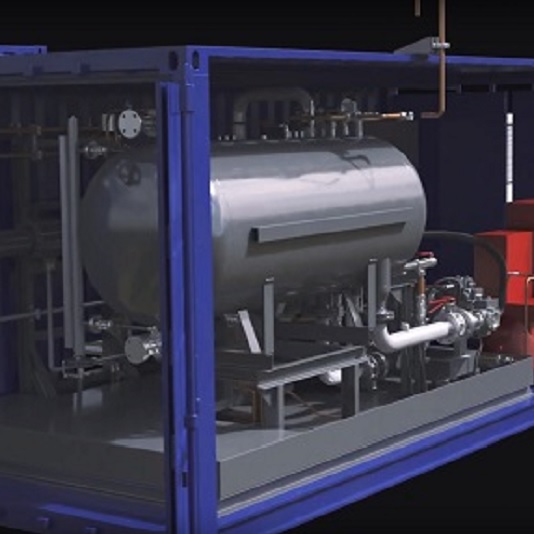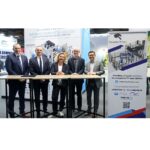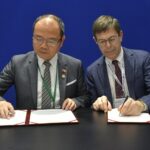The partners of the European project intended to develop an H 2 distribution station based on an unprecedented concept have presented the first functional prototype which paves the way to commercial production.
The new generation of hydrogen distribution stations developed in connection with the H2REF (Development of a cost effective and reliable hydrogen fuel cell vehicle refuelling system) project works! On 27 February 2020, during a live webinar from Sunderland (United Kingdom), the project partners officially announced that the first prototype assembled and tested at the premises of Haskel has delivered on its promises.
The prototype is comprised of a set of 16 tanks and a hydraulic system (see photograph) that is used to pressurise the tanks. Indeed, it serves to compress and store the dihydrogen at 900 bars in tanks to then distribute them in hydrogen fuel cell vehicles.
The key to the success of this project is rather than compressing the gas and then storing it, this station does both at the same time: the hydrogen is introduced into bladders installed inside the composite tanks and a hydraulic system injects pressurised oil between the two to compress the gas. Further to the successive pressurisation and transfer of the gas, the system can rise to 900 bars and must withstand a large number of cycles with minimum maintenance.
Cetim, a key partner of the project
Funded by the fuel cells and hydrogen 2 joint undertaking (FCH JU2), H2REF is led by a consortium, jointly headed by Cetim and H2NOVA, which is composed of four European players (Hexagon, Haskel, CCS and LBST) as well as UTC as a Cetim contractor. In addition to jointly leading the project, Cetim provided its expertise during the modelling of the fluid system and in the development of the hydraulic device (alongside UTC) responsible for injecting the oil into the composite tanks housing the bladders. Cetim also carried out the qualification tests of the accumulators manufactured by Hexagon as well as the water burst test under very high pressure. To this end, it adapted the test resources so as to safely carry out the test campaigns under 2,200 bars on the 75 litre tanks.
The project is now complete. It may continue with a new optimisation phase before commercial production over a 3-year timeframe.
To watch the replay of the project presentation webinar and learn about the technology through a video animation, consult the project site.



